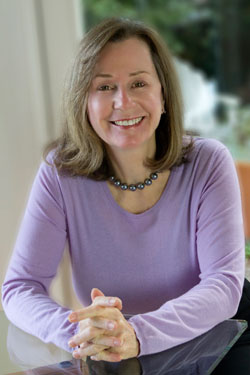When I was an “on-air talent” on an NBC show, one of the first things they tested before I was hired was my likeability, what the TV industry and others dub the “Q” factor. Even though I tested high on that range I was keenly aware that it mattered more than my journalism experience, smarts, willingness to work hard or aptitude for this job. In fact, I believed that at least three other candidates were better qualified. Others call this effect the Mitt Romney mistake.
 Your early smile, sustained attention and warm nods – how much do these behaviors affect others? Enough to surprise many researchers, it turns out. In fact, we are more likely to be well-liked when exhibiting these specific behaviors than from attempting to figure out what others instinctively experience as friendliness, relevance, empathy and realness – the four general factors cited by Likeability Factor author Tim Saunders.
Your early smile, sustained attention and warm nods – how much do these behaviors affect others? Enough to surprise many researchers, it turns out. In fact, we are more likely to be well-liked when exhibiting these specific behaviors than from attempting to figure out what others instinctively experience as friendliness, relevance, empathy and realness – the four general factors cited by Likeability Factor author Tim Saunders.
When students in a study watch even brief (two, five or ten second) glimpses of strangers expressing these positive actions on soundless video clips, they are deeply influenced.
“While students see just a flash of a teacher their first feeling highly correlates to their end-of-semester rating of that teacher,” wrote Stanford psychology professor, Nalini Ambady.
Along with study co-author Robert Rosenthal, they started by showing students 10-second clips. Then “thin-sliced it down” to five-second, then two-second clips, having participants rate them on the 15 characteristics including how empathic, accepting, professional, optimistic, or supportive the teacher seemed.
 No matter how thinly Ambady sliced the behavior, the more positive and likable the professor, based on these behaviors, the higher their evaluations.
No matter how thinly Ambady sliced the behavior, the more positive and likable the professor, based on these behaviors, the higher their evaluations.
Concluded Ambady, “One would think that teacher smarts, preparation and organization should count – and I’m sure it does to some extent but behavior, charisma, and the factors that go into holding an audience count more.”
And how does surgeons’ behavior towards patients affect the number of malpractice suits they get? Ambady found similar results.
 Key was voice tone. When she tracked just that trait, “We were really amazed. With just 20 seconds of each doctor’s voice, you could predict malpractice claims. For instance, surgeons who sounded more unfeeling or dominant were more likely to have been sued in the past.”
Key was voice tone. When she tracked just that trait, “We were really amazed. With just 20 seconds of each doctor’s voice, you could predict malpractice claims. For instance, surgeons who sounded more unfeeling or dominant were more likely to have been sued in the past.”
With those two studies in mind, it behooves us all to recognize that competence and good intentions don’t cut it if we don’t also look like we really are. That steady and direct attention, with your whole face and body is the first factor to foment the trust that can pull others in.
Writing this raises poignant feelings for me, and many others, because Ambady, who was such a deeply caring and talented researcher, teacher and friend to many, died last year, “after a lengthy worldwide campaign by family members, friends, and students to find a bone marrow donor.” She was just 54 years old. Nalini is sorely missed, as she embodied the results of her research.
 As Melanie Tannenbaum concluded, when poignantly citing Nalina’s trailblazing research, “our expectations and first impressions can end up shaping our ultimate realities.”
As Melanie Tannenbaum concluded, when poignantly citing Nalina’s trailblazing research, “our expectations and first impressions can end up shaping our ultimate realities.”



really nicely done, Kare. Thank you! And really got me thinking. How the seemingly so simple, (our first impressions, how respond to people – our likeability has such a profound affect on the outcome of our relationships in business and otherwise. Plus, I love this little boy’s smile!!